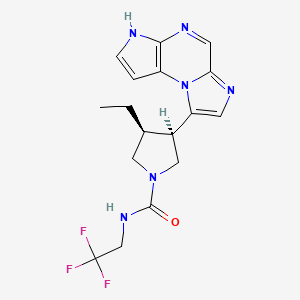In continuation of my update on Opzelura (ruxolitinib) , Incyte (Nasdaq:INCY)announced the U.S. Food and Drug Administration (FDA) approval Opzelura™ (ruxolitinib) cream for the short-term and non-continuous chronic treatment of mild to moderate atopic dermatitis (AD) in non-immunocompromised patients 12 years of age and older whose disease is not adequately controlled with topical prescription therapies, or when those therapies are not advisable. Opzelura is the first and only topical formulation of a JAK inhibitor approved in the United States. Research shows dysregulation of the JAK-STAT pathway contributes to key features of AD such as itch, inflammation and skin barrier dysfunction.
“Atopic dermatitis is a chronic immune-mediated disease that can be challenging to manage. Many patients do not respond well to existing treatments and have uncontrolled disease,” said Jonathan Silverberg, M.D., Ph.D., M.P.H., Associate Professor of Dermatology and Director of Clinical Research and Contact Dermatitis at The George Washington University School of Medicine and Health Sciences. “As a clinician, I am excited to have a non-steroidal topical cream like Opzelura.”
“The approval of Opzelura is an important advancement in the treatment of AD, and we are pleased to offer a novel topical treatment option that targets a pathway believed to be a source of inflammation,” said Hervé Hoppenot, Chief Executive Officer, Incyte. “At Incyte, we are committed to transforming the treatment of immune-mediated dermatologic conditions like AD. We look forward to bringing Opzelura to the patient community and also continuing to explore its potential in other challenging skin diseases.”
The FDA approval was based on data from the TRuE-AD (Topical Ruxolitinib Evaluation in Atopic Dermatitis) clinical trial program, consisting of two randomized, double-blind, vehicle-controlled Phase 3 studies (TRuE-AD1 and TRuE-AD 2) evaluating the safety and efficacy of Opzelura in more than 1,200 adolescents and adults with mild to moderate AD. Results from the studies showed patients experienced significantly clearer skin and itch reduction when treated with Opzelura cream 1.5% twice daily (BID), compared to vehicle (non-medicated cream):
- Significantly more patients treated with Opzelura achieved Investigator’s Global Assessment (IGA) Treatment Success (IGA-TS, primary endpoint) at Week 8 (defined as an IGA score of 0 [clear] or 1 [almost clear] with at least a 2-point improvement from baseline): 53.8% in TRuE-AD1 and 51.3% in TRuE-AD2, compared to vehicle (15.1% in TRuE-AD1, 7.6% in TRuE-AD2; P<0.0001).
- Significantly more patients treated with Opzelura experienced a clinically meaningful reduction in itch from baseline at Week 8, as measured by a ≥4-point reduction in the itch Numerical Rating Scale (itch NRS4): 52.2% in TRuE-AD1 and 50.7% in TRuE-AD2, compared to vehicle (15.4% in TRuE-AD1, 16.3% in TRuE-AD2; P<0.0001), among patients with an NRS score of at least 4 at baseline.
In clinical trials, the most common (≥1%) treatment-emergent adverse reactions in patients treated with Opzelura were nasopharyngitis, diarrhea, bronchitis, ear infection, eosinophil count increased, urticaria, folliculitis, tonsillitis and rhinorrhea2. See Important Safety Information below, including Boxed Warnings for serious infections, mortality, malignancy, major adverse cardiovascular events and thrombosis, seen with JAK inhibitors for inflammatory conditions.
“It can be hard for people to fully appreciate how difficult AD can be and the tremendous impact it has on patients,” said Julie Block, President & CEO, National Eczema Association. “The chronic itch is difficult to cope with and related sleep issues can be exhausting. Many patients and their dermatologists are looking for additional options to meet current unmet needs in the management of AD. The approval of Opzelura is exciting news, and we welcome a new treatment option for our community.”
AD is a chronic skin disease affecting more than 21 million people aged 12 years and older in the U.S. and is characterized by inflammation and itch3. Signs and symptoms include irritated and itchy skin that can cause red lesions that may ooze and crust. People with AD are also more susceptible to bacterial, viral and fungal infections.














